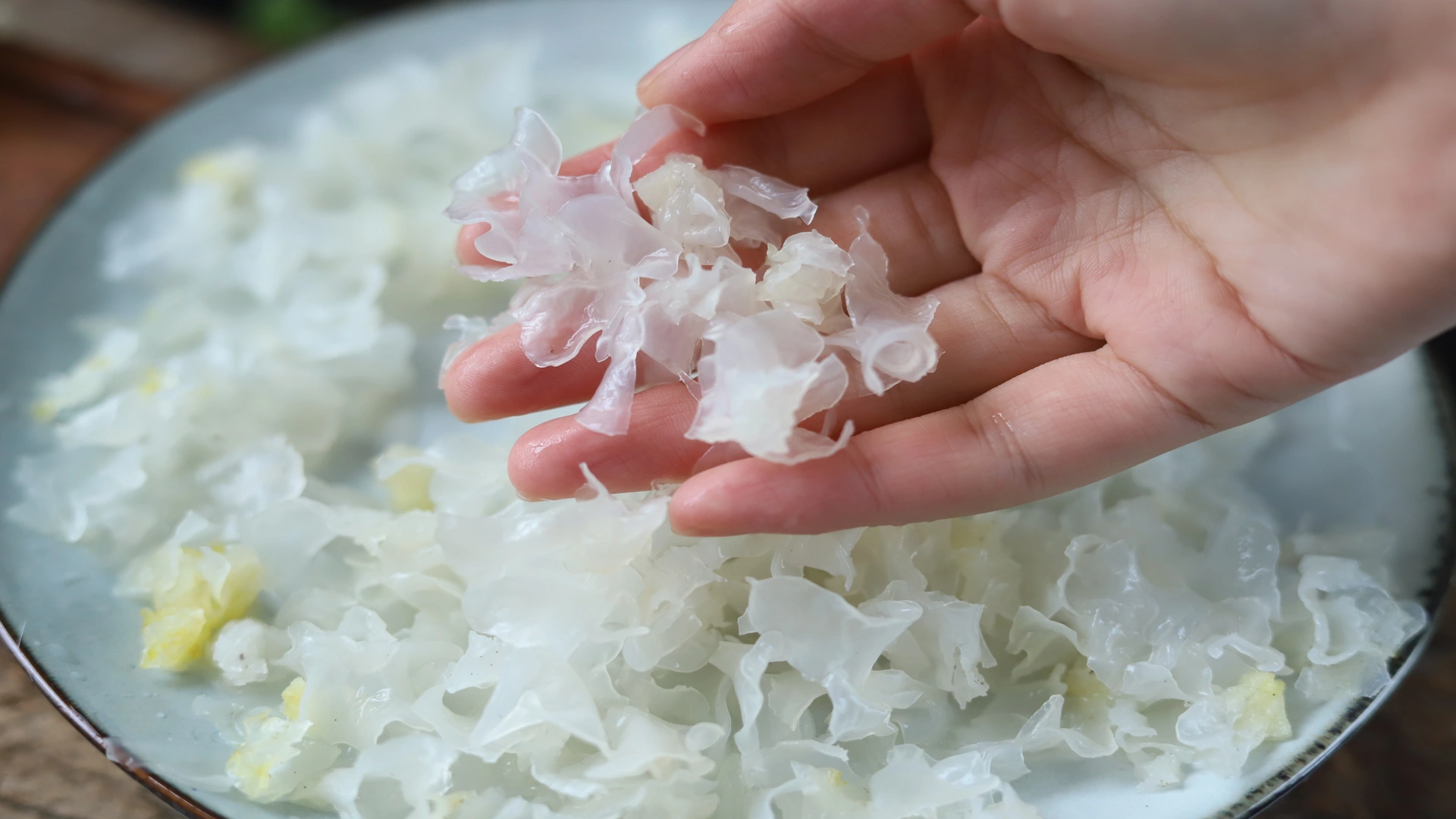The Delicacy of Tongjiang White Fungus Soup: A Culinary Journey into Sichuan’s Geographical Indication Treasure
Introduction:
As a culinary professional, I am thrilled to share with you the exquisite delight that is Tongjiang White Fungus Soup, a delicacy originating from Tongjiang County, located in the heart of Sichuan Province, China. This culinary gem is not only a testament to the region’s rich gastronomic heritage but also a symbol of its cultural identity. Known for its nourishing and beautifying properties, Tongjiang White Fungus Soup is a geographical indication product that has been cherished for centuries.
Historical and Cultural Background:
The history of Tongjiang White Fungus dates back to the Tang Dynasty, where it was first cultivated in the deep valleys of Tongjiang. Over time, the locals perfected the art of cultivating this fungus, which grew to become a staple in their diet and a symbol of their region’s identity. The culture surrounding this delicacy is deeply rooted in the agricultural practices and the reverence for nature that has been passed down through generations.
Ingredients and Preparation:
The star of this dish is the Tongjiang White Fungus, a type of fungus known for its tender texture and high nutritional value. To prepare the soup, we select the finest quality white fungus, which is meticulously cleaned and soaked to retain its natural flavors. The base of the soup is a rich broth, traditionally made from simmering chicken or pork bones, which infuses the dish with a deep, savory flavor. Additional ingredients may include lean pork, ham, or tofu, all chosen for their ability to complement the delicate taste of the white fungus.
Taste and Texture:
Tongjiang White Fungus Soup is a symphony of flavors and textures. The white fungus, when cooked, has a soft, gelatinous texture that melts in your mouth, releasing a subtle, earthy sweetness. The broth is rich and comforting, with a depth of flavor that is both warming and satisfying. The combination of the fungus with the savory broth creates a balance that is both luxurious and grounding.
Visual Description:
The presentation of Tongjiang White Fungus Soup is as elegant as its taste. The white fungus, with its translucent, ear-like shape, gently floats atop a clear, golden broth. Garnishes such as green onions or coriander add a pop of color, while thin slices of meat or tofu provide a textural contrast. The dish is often served in a traditional Chinese bowl, allowing the steam to rise and carry the aroma to the diner’s senses, enticing them to take the first sip.
Representative Dishes and Culinary Uses:
Beyond the classic soup, Tongjiang White Fungus can be incorporated into a variety of dishes. It can be used in sweet desserts, where its natural sweetness is highlighted with the addition of fruits and honey. In savory dishes, it can be stir-fried with vegetables or used as a filling in dumplings, adding a unique texture and taste.
Culinary Characteristics:
The distinct characteristics of Tongjiang White Fungus Soup lie in its滋补养颜 (nourishing and beautifying) qualities. Rich in protein, vitamins, and minerals, it is believed to promote good health and enhance the complexion. Its mild flavor profile makes it a versatile ingredient that can be adapted to suit a variety of culinary styles, from traditional Chinese to fusion cuisine.
Conclusion:
Tongjiang White Fungus Soup is more than just a dish; it is a culinary experience that encapsulates the essence of Sichuan’s rich food culture. As a food professional, I am honored to share this treasure with the world, inviting you to savor not just the flavors, but also the history and tradition that make this dish a true geographical indication product of Sichuan.
